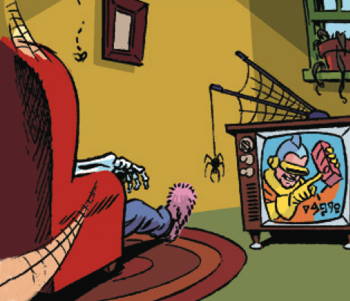February 2020
February 19, 2020
Insect Butter
The latest effort to convince everyone to eat insects comes from Ghent University in Belgium where researchers tested whether people could tell the difference between waffles, cookies, and cake made with butter, versus butter combined with fat from black soldier fly larvae.They claimed that a mixture of 75% butter and 25% insect fat was undetectable to people. And, in some cases, even a 50/50 mix of butter/insect fat couldn’t be detected.
So they’re hopeful that bakery products made with insect butter may soon be on shelves. They note:
More info: Ghent University

Posted By: Alex - Wed Feb 19, 2020 -
Comments (2)
Category: Food, Insects and Spiders
Kangaroo Tendon Sutures
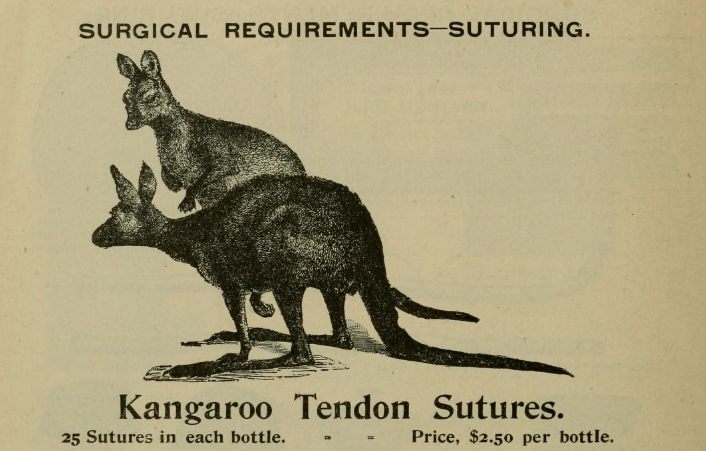
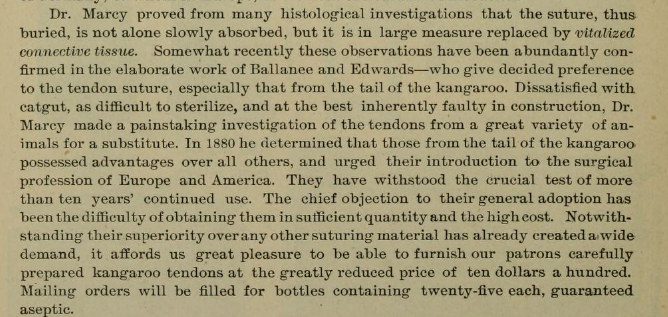
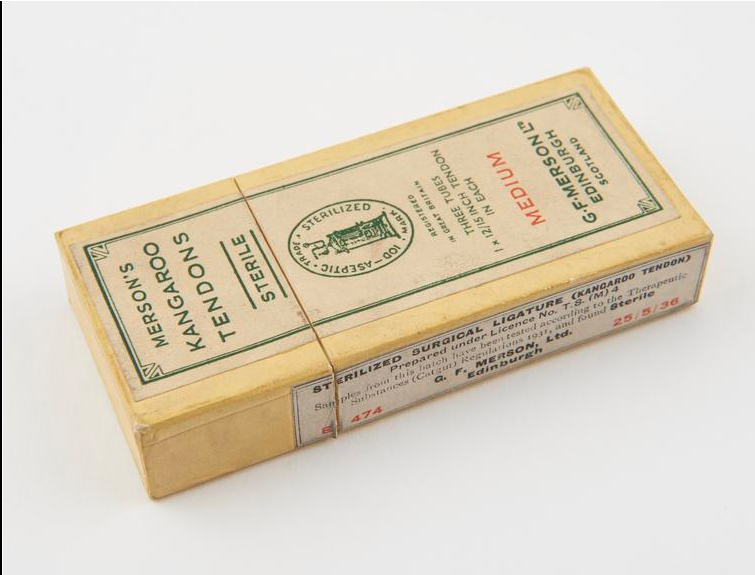
Source of first two images, with further explanation.
Posted By: Paul - Wed Feb 19, 2020 -
Comments (0)
Category: Animals, Medicine, Nineteenth Century
February 18, 2020
Elm Farm Ollie Day
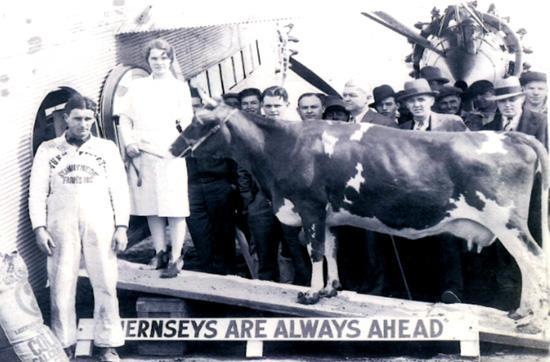
Feb. 18 is Elm Farm Ollie Day, commemorating the first flight in a plane by a cow. An article posted over at rootsweb.ancestry.com tells us that Elm Farm Ollie (aka Sunnymede Ollie, Nellie Jay, or Sky Queen) is remembered each year at the dairy festival in Mount Horeb, Wisconsin:

A 1930 news-wire story provided details about the historic flight:

Claude M. Sterling, of Parks Air college, will pilot Sunnymede Ollie, Guernsey from Bismarck, Missouri, over the city in a tri-motored Ford.
The cow will be fed and milked and the milk parachuted down in paper containers. A quart of milk will be presented to Colonel Lindbergh when he arrives.
Weighing more than 1000 pounds, the cow will be flown to demonstrate the ability of aircraft. Scientific data will be collected on her behavior.
-The Evening Tribune (Albert Lea, Minn.) - Feb. 18, 1930.
More info at wikipedia and mustardmuseum.com.
Posted By: Alex - Tue Feb 18, 2020 -
Comments (7)
Category: Animals, Farming, Air Travel and Airlines, 1930s
Advertising Chairs
Back in 2018, Paul posted about an "advertising chair" patented in 1910. As a person rocked in it, advertisements scrolled in the armrests.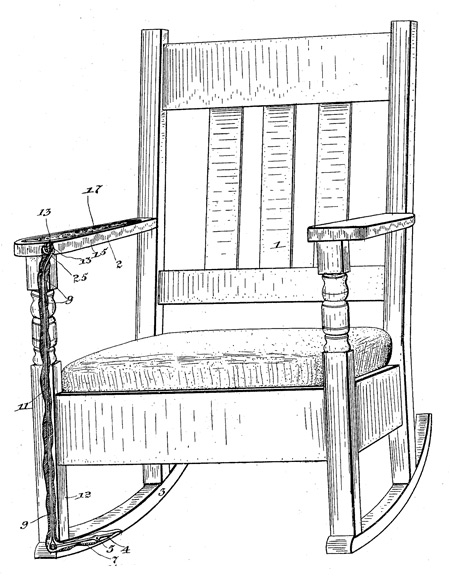
Patent No. 958,793 (1910)
I recently discovered that this invention wasn't a one-off. In the early twentieth century, inventors were actively competing to perfect advertising chairs and inflict them on the public. I was able to find four other advertising chair patents (and there's probably even more than this). To my untrained eye, they all look very similar, but evidently they were different enough to each get their own patent.

Patent No. 934,856 (1909)
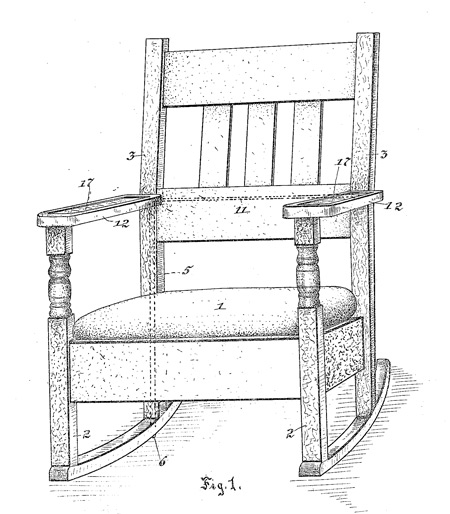
Patent No. 993,397 (1911)
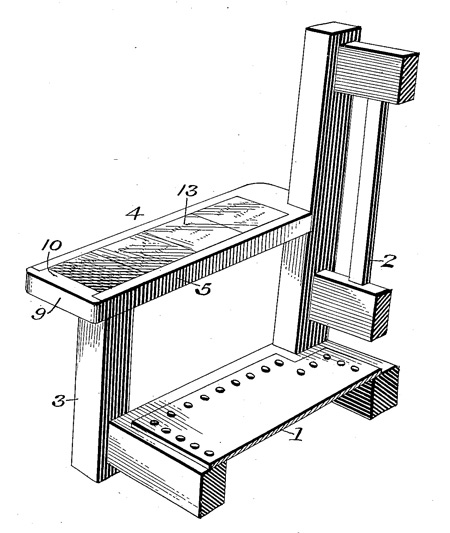
Patent No. 1,094,154 (1914)

Patent No. 1,441,911 (1923)
A newspaper search brought up an 1895 article that described advertising chairs as the "latest in advertising." It also explained that the concept was to put these chairs in various places where there were captive audiences, such as "hotel lobbies, public libraries, depots and in fact in all places where tired humanity is used to taking a quiet little rest during the day."
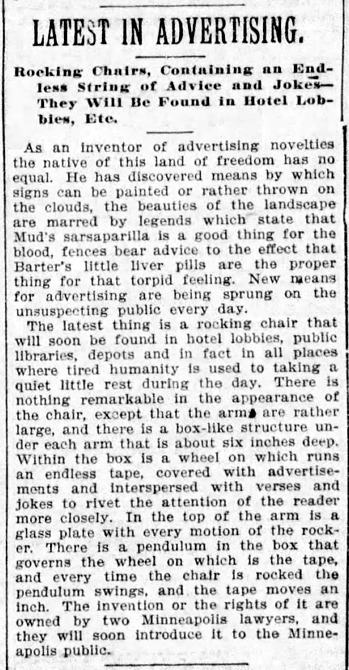
Minneapolis Star Tribune (Dec 8, 1895)
But although entrepreneurs may have been keen to build advertising chairs, the public was evidently far less enthusiastic about them. An editorial in the Kansas City Journal (reprinted in Printer's Ink magazine - Jan 2, 1901) described an advertising chair as "comfortable enough physically, but mentally it is a torture... Just who invented the advertising chair is not known. He has no reason to be proud."

There must have been a number of these advertising chairs in existence, but I'm unable to find any surviving examples of them. Searching eBay, for instance, only pulls up chairs with advertisements printed on them.
Posted By: Alex - Tue Feb 18, 2020 -
Comments (4)
Category: Furniture, Inventions, Patents, Advertising
The Dangerous Sports Club at the Golden Gate Bridge
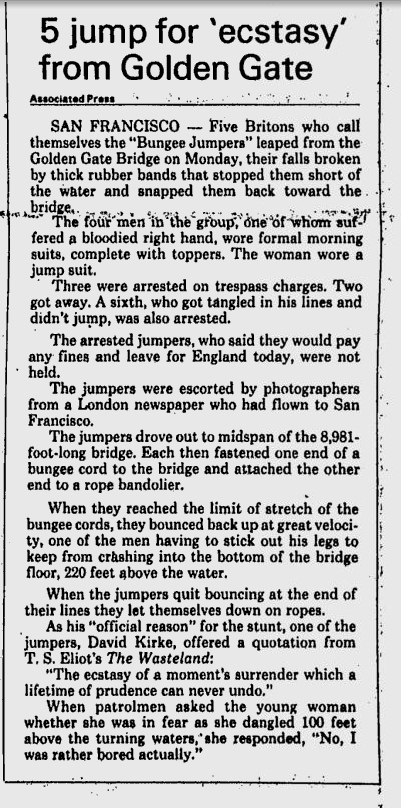
Article source.
Their Wikipedia page.
Article about other bungee-ers at the bridge.

Source.
Posted By: Paul - Tue Feb 18, 2020 -
Comments (1)
Category: Antisocial Activities, Architecture, Crime, Daredevils, Stuntpeople and Thrillseekers, Twentieth Century, Twenty-first Century
February 17, 2020
Relationship of noise tolerance to martini consumption
Back in the sixties, researchers weren't afraid to tackle the really important questions...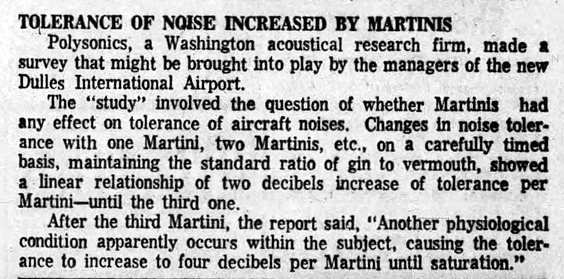
Knoxville News Sentinel - Dec 2, 1962
Posted By: Alex - Mon Feb 17, 2020 -
Comments (6)
Category: Science, 1960s, Alcohol, Cacophony, Dissonance, White Noise and Other Sonic Assaults
DIY Bikini
Posted By: Paul - Mon Feb 17, 2020 -
Comments (1)
Category: Beauty, Ugliness and Other Aesthetic Issues, Contests, Races and Other Competitions, Fashion, 1960s
February 16, 2020
Shoe Gongs
Anthony Faranda of Yonkers, NY worried that children didn't like wearing rubber-soled shoes because they made no noise when walking on a pavement. So, he invented a shoe gong. Or, as he called it, a "footwear actuated noise maker." He patented it in 1957.It was a disc and clapper that could be worn over shoes. He explained: "The arrangement is such that upon normal walking steps or running strides the clapper is activated to make noise and thereby promote the interest of children in wearing shoes with soles that do not make an audible sound in engaging firm or rigid surfaces."
Maybe kids would have liked these, but not, I imagine, their parents.
He assigned the patent to the NY advertising agency McCann-Erickson. It's unclear what plans they might have had for these things.
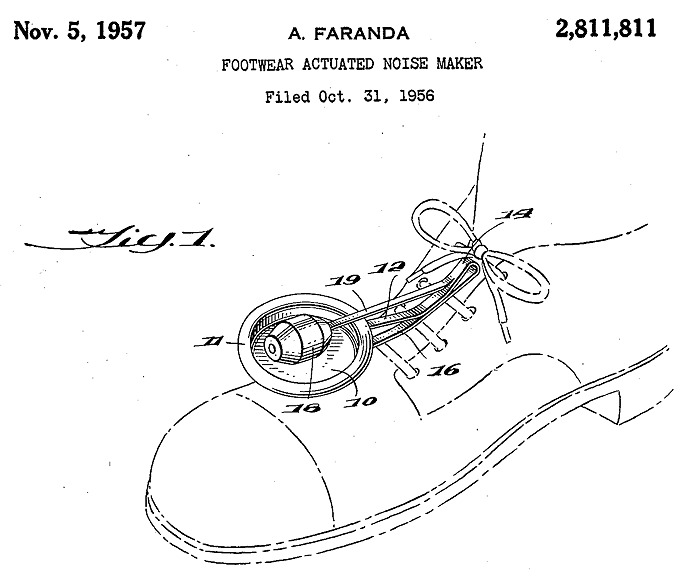
Posted By: Alex - Sun Feb 16, 2020 -
Comments (2)
Category: Inventions, Patents, Shoes, 1950s
Linda Lawson, Miss Cue
From her Wikipedia page:On May 5, 1955, Lawson was dubbed "Miss Cue"[4][5] in reference to a series of nuclear tests conducted by the US military under "Operation Teapot," and publicized as "Operation Cue" in a short film distributed by the US Federal Civil Defense Administration. [6]
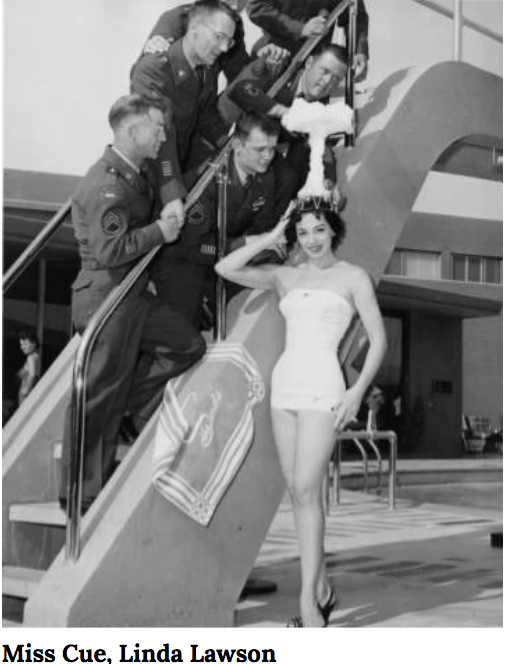
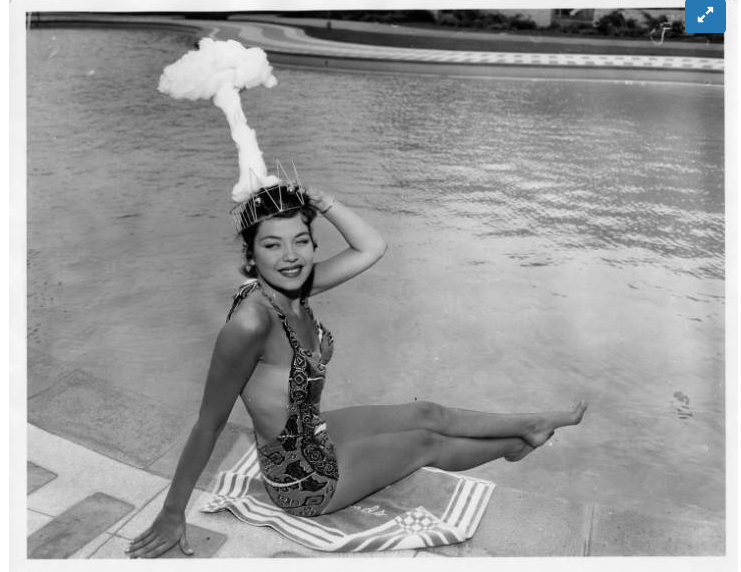
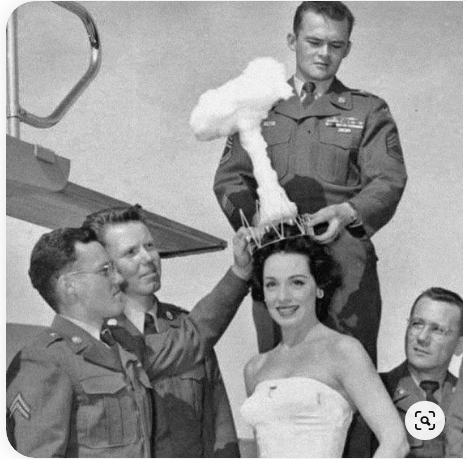
Posted By: Paul - Sun Feb 16, 2020 -
Comments (3)
Category: Death, Government, Corporate Mascots, Icons and Spokesbeings, Atomic Power and Other Nuclear Matters, 1950s
February 15, 2020
Goth researcher
This researcher looks strangely out-of-place in the 1930s. He looks more like a singer in a 1980's goth band.
Minneapolis Star Tribune - May 11, 1930
For example, he could easily have been a member of Bauhaus.

Posted By: Alex - Sat Feb 15, 2020 -
Comments (3)
Category: 1930s
| Get WU Posts by Email | |
|---|---|

| Who We Are |
|---|
| Alex Boese Alex is the creator and curator of the Museum of Hoaxes. He's also the author of various weird, non-fiction books such as Elephants on Acid. Paul Di Filippo Paul has been paid to put weird ideas into fictional form for over thirty years, in his career as a noted science fiction writer. He has recently begun blogging on many curious topics with three fellow writers at The Inferior 4+1. Chuck Shepherd Chuck is the purveyor of News of the Weird, the syndicated column which for decades has set the gold-standard for reporting on oddities and the bizarre. Our banner was drawn by the legendary underground cartoonist Rick Altergott. Contact Us |
